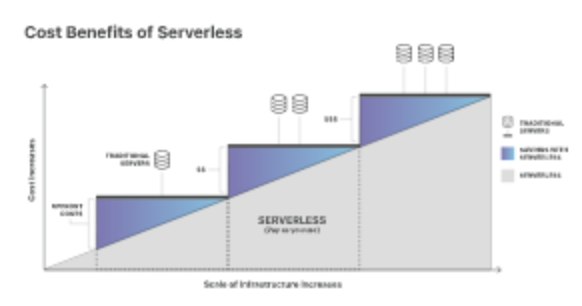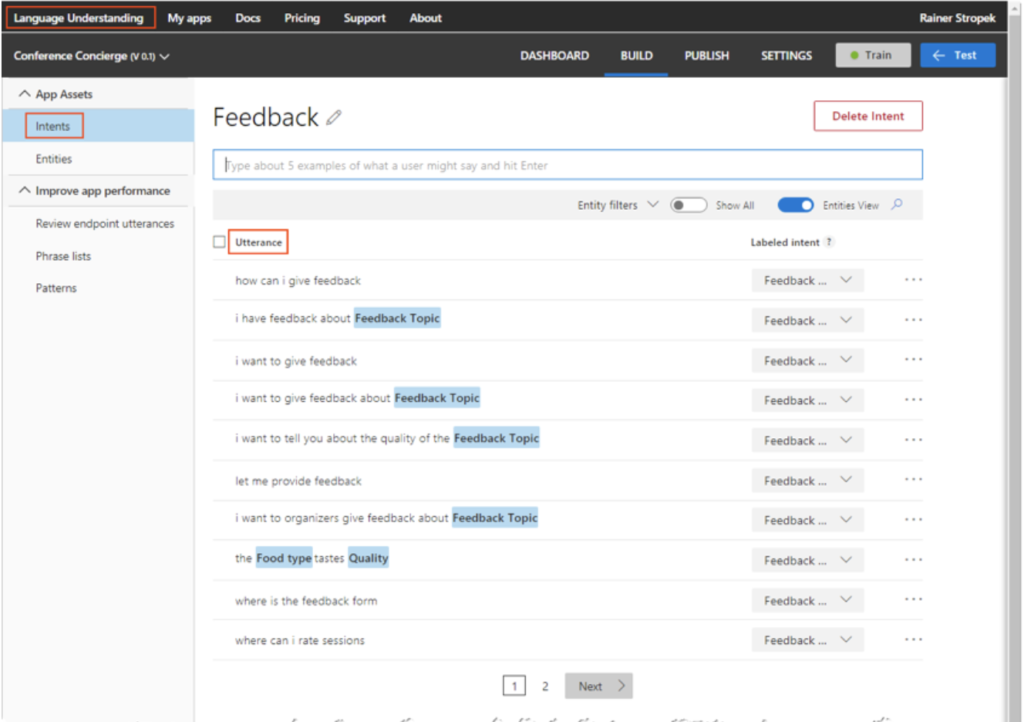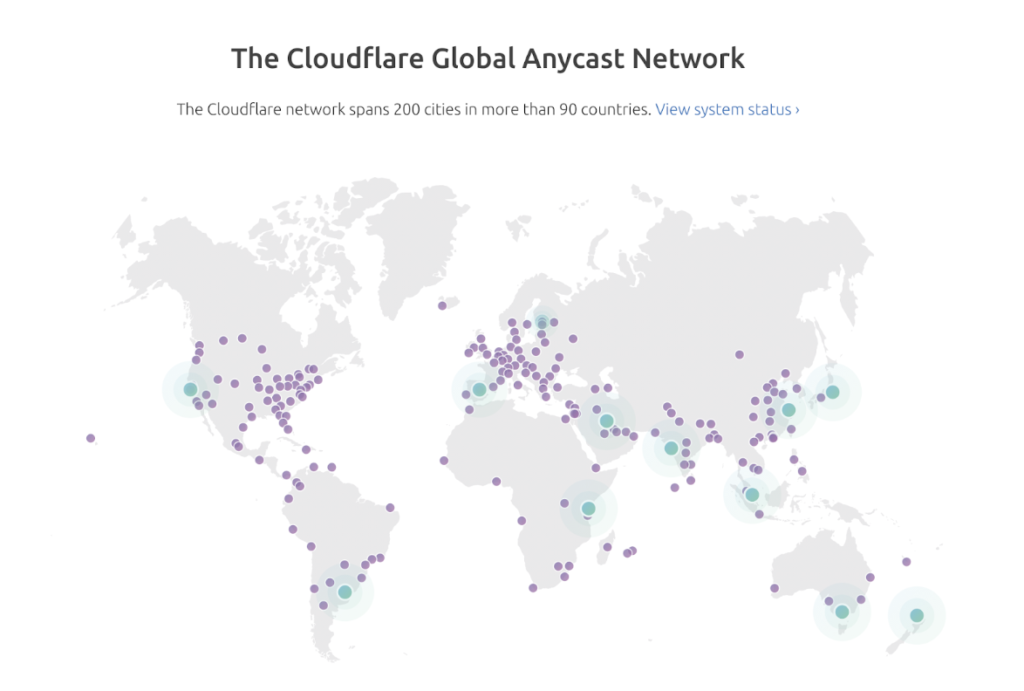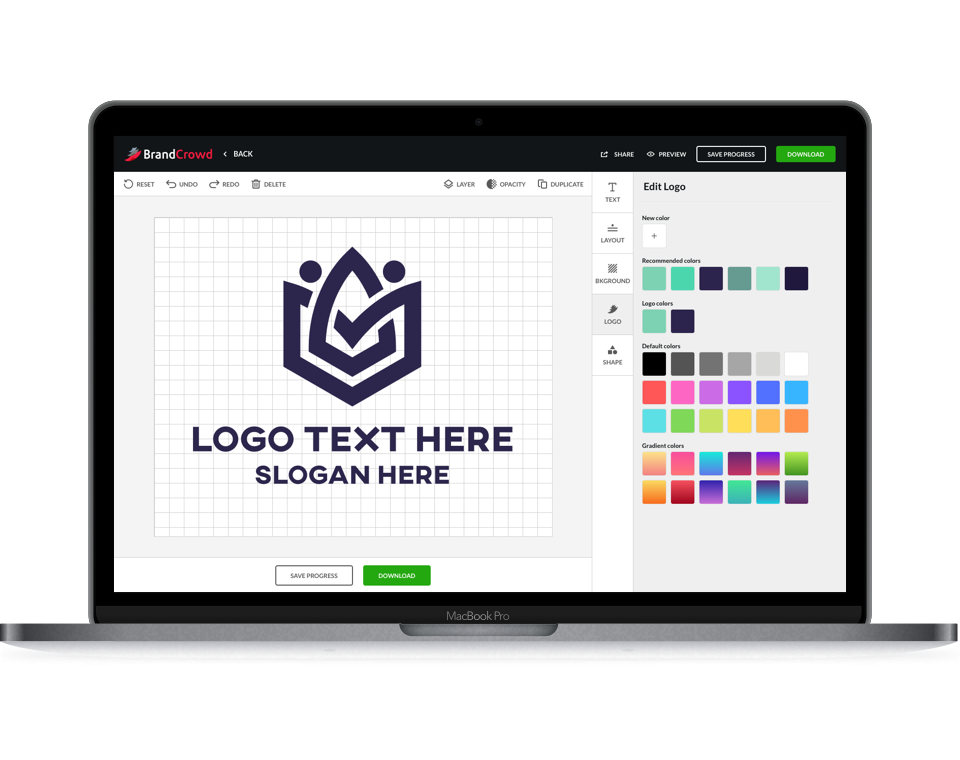If you’re a sysadmin looking to expand his knowledge, a jack-of-all-trades who’s looking to upgrade his know-how on Cloud innovations or a programmer who likes to be up to date with the latest trends, this article is for you.
By the end of the article, you will have an overview of the latest Cloud innovations that are of major interest in 2020 and will change the way we build and scale tech infrastructures in the future.
Top 8 Cloud innovation in 2020
1. Serverless computing
Serverless computing allows technical teams to focus more on building great products, instead of understanding and handling the configuring, maintaining, and scaling of their infrastructure.
Simply put, serverless computing allows users to write and deploy code without the hassle of worrying about the underlying infrastructure.
It also allows you to get backend services from a serverless vendor on a flexible pay-as-you-go model. This helps you to scale faster and save money by simply not having to reserve and pay for a fixed amount of bandwidth or number of servers that you probably don’t need straight from the beginning.

Image source: Cloudflare
Although called serverless, these services still use physical servers. The difference is that you don’t need to be aware of them, as the serverless provider manages the entire infrastructure.
Benefits of serverless computing:
- Pay for only what you need
- Easily extend and scale full-stack serverless apps
- Allows you to write code your way, and use your favorite programming languages
- Develop, deploy, run, and scale applications anywhere, on a third-party Cloud provider or at the edge
- Get rid of servers management
- Faster and more productive development and instant deployment
- Automatic and instant scaling with usage increase
2. AI-as-a-Service
AI Cloud services make technology more accessible and suitable for everyday use. Instead of developing everything from scratch, which takes time and in-depth know-how, you can simply get ready-made AI services in the Cloud and pay on the go.
AI-as-a-Service is available in all major fields:
- Image/Video Processing with Computer Vision
- Speech (Speech to Text) and Speaker Identification
- Natural Language Processing (Understanding text, emotion in text, phrases, etc.).
A good example, in this case, is Microsoft’s Split:
- Decision (Content Moderation / Anomaly Detection)
- Language (Text Comprehension / Language Understanding / Conversational Questions & Answers / Text Analytics and Text Translation)
- Speech (Speech to Text, Text to Speech, Speech Translation and Speaker Recognition)
- Vision (Image Analysis, Face Detection / Recognition / Emotion, Form Recognizer and extra tables from documents, Optical Character Recognition and even handwriting to text, and Video Indexer)
But Google, IBM, and AWS also offer ready to use solutions.
Most Cloud providers offer the ability to customize their models to recognize product-specific tasks (instead of recognizing fruits, you might want to recognize car brands that pass through an intersection). This means that you can customize them according to every project’s requirements.
One of the reasons AI and ML models have gained popularity is that their computing power has dramatically increased, and there are a ton of free and open-source models.
Instead of building everything from scratch, you can use adaptable AI services, train them with your own data, and use them in production.

Source: Microsoft LUIS
Benefits of AI-as-a-Service
- AI and Machine Learning can be used even by developers with no development experience in the field of ML
- The Automation of hundreds of tasks that can be directly integrated into your product
- Customizable models that can be adapted to almost any use case
- Availability via API for easy integration with your product
- Pay for only what you use. With most Cloud Providers offering generous free monthly usage quotas.
3. Containers
We can’t speak about Cloud innovations without mentioning the impact of containers. Containers are the go-to solution to optimize resource usages and reduce the need for redundant operating systems.
They allow organizations to reduce the amount of equipment needed to support workloads and ease the management of applications across tech infrastructures.
Docker is one of the most adopted containers in real-life production. They ease the heavy operating system usage that traditional Cloud computing could not avoid. What Docker containers do is that instead of hosting each operating system per each application, some common resources can be shared in a new layer called a “docker-engine” that sits on top of an OS.
Containers also come with great portability capacities (we’ll talk more about portability in an upcoming section).
Benefits of containers:
- Applications can be deployed, undeployed, started, stopped, changed, and processed FASTER
- Optimized resource utilization
- Faster portability
- Increased Consistency (If it works locally it will work the same anywhere)
- Improved performance
- Reduced operating costs
- Accessible on a pay-as-you-use model – Container as a Service (CaaS)
4. Distributed Cloud/Distributed Computing
In 2020, the Cloud has expanded its territory and become more and more distributed.
A distributed Cloud can be seen as a group of systems located in different places. All systems are connected over a network and they work on a common goal. But each one of them is autonomous, programmable, asynchronous, and failure-prone.
Distributed Cloud computing expands the traditional data center-based Cloud model to a system of Cloud infrastructure components that are geographically distributed. This way, it’s easier to meet requirements for performance, redundancy, and regulations.
Benefits of distributed Cloud:
- On-demand scaling of computing and storage
- Improved computing system performance
- Good price-performance ratio
- More secure operations
5. Edge computing
Gartner defines edge computing as “a part of a distributed computing topology where information processing is located close to the edge, where things and people produce or consume that information.”
By bringing computing closer to where it’s needed, the need for long-distance communication between client and server is minimized, reducing latency.
Cloudflare is the king of innovation here.

Source: Cloudflare
And companies like Cloudflare contribute to edge computing to be quickly adopted by small innovative companies and bleeding-edge enthusiasts.
Edge computing’s main benefit is that it runs fewer processes in the Cloud and moves those processes to local places, such as on a user’s computer, an IoT device, or an edge server.
Benefits of edge computing:
- Reduced latency
- Avoided delays
- Real-time data processing and data analyzing
- Added functionality
6. Cloud portability
When it comes to Cloud portability, there are two basic types: stack and component. Each has its own requirements, but both provide the same outcome: move/port an application from one host environment to another in a matter of minutes.
At the base of Cloud, portability is the storage technology based on layers, as we explained in the Containers section. This technology fostered the development of Cloud portability tools, which can help you adopt multi-Cloud strategies and focus more on portability, instead of always focusing on procurement, functionality, and risk mitigation.
Benefits of Cloud portability:
- Not be locked into a single vendor
- Easily switch Clouds
- Inter-Cloud Redundancy (deploy on multiple Clouds and don’t rely just on one)
7. Quantum Computing
According to Gartner, quantum computing is a type of nonclassical computing that operates on the quantum state of subatomic particles.
Now, this might sound like a sci-fi-level innovation, so let’s take it step by step.
Quantum Computing is a different kind of paradigm from classical computers. It’s not meant to replace the traditional one but to solve some problems faster. You can find a comprehensive explanation of what quantum computing means in this video.
Industry leaders are racing to develop and launch viable quantum computing solutions that, until recently, were limited to researching labs.
Although Cloud quantum computing is still in its infancy, Amazon Web Services (AWS), Microsoft, and IBM have begun providing Cloud-based quantum computing solutions as a service in the Cloud. This way, quantum computing will become even more commercially available in 2020.
Working quantum computing into the Cloud has accelerated the progress in the field. Why? Because now you can have access to the capabilities of a quantum computer without building one yourself.
Benefits of quantum computing:
- Much faster processing speeds
- Solve problems that today’s computers would take an enormous time
- Access to quantum computers in the Cloud
- Better at modeling complex scenarios
8. Site Reliability Robot
Site Reliability Robots are a new thing in the Cloud landscape. A site reliability robot monitors, predicts, and suggests insights for changes in configs and resource settings across the VM instance, OS, and installed packages and services to maximize performance and reduce costs autonomously.
DevOps and operations engineers can use site reliability robots to deploy new code, evaluate new infrastructure changes, and adjust according to the changes in user patterns.
These robots are of extreme help when you’re looking for easy-to-implement Cloud automation solutions. Bunnyshell is one of the first products that coined the concept of site reliability robot and offers a full-stack DevOps suite for devs that want to automate everything Cloud-related. SRR eliminates the guesswork out of running applications, with high performance and low cost.
Benefits of site reliability robots:
- Advanced monitoring (real-time monitoring of all packages configs and dependencies)
- Smart alerts (instant alerts whenever changes occur and red flags are identified by an SRR)
- Continuous optimization (real-time insights after changes in apps or infrastructure)
- Easy setup (5 minutes setup and works on any server, in any Cloud or premise)
9. Blockchain as a Service
Cloud service providers like Amazon, Microsoft, and IBM are now making it much easier for companies of any size to adopt blockchain technology.
The business model is known as Blockchain-as-a-Service (BaaS). This means that the provider is responsible for creating, configuring, and maintaining the blockchain technology, while companies can use the technology on a pay-as-you-use model to develop blockchain-based applications.
Benefits of Blockchain as a Service
- Better transparency, security, and traceability
- Makes blockchain technology commercially accessible
- Lower costs for the buyer
- A Lower risk involved with creating blockchain-based applications for the client
While some of these technologies are already standard in Cloud-first companies, others are still in their infancy. There’s no reason not to start playing with them right now, though, especially as some of them have special perks for early adopters.





